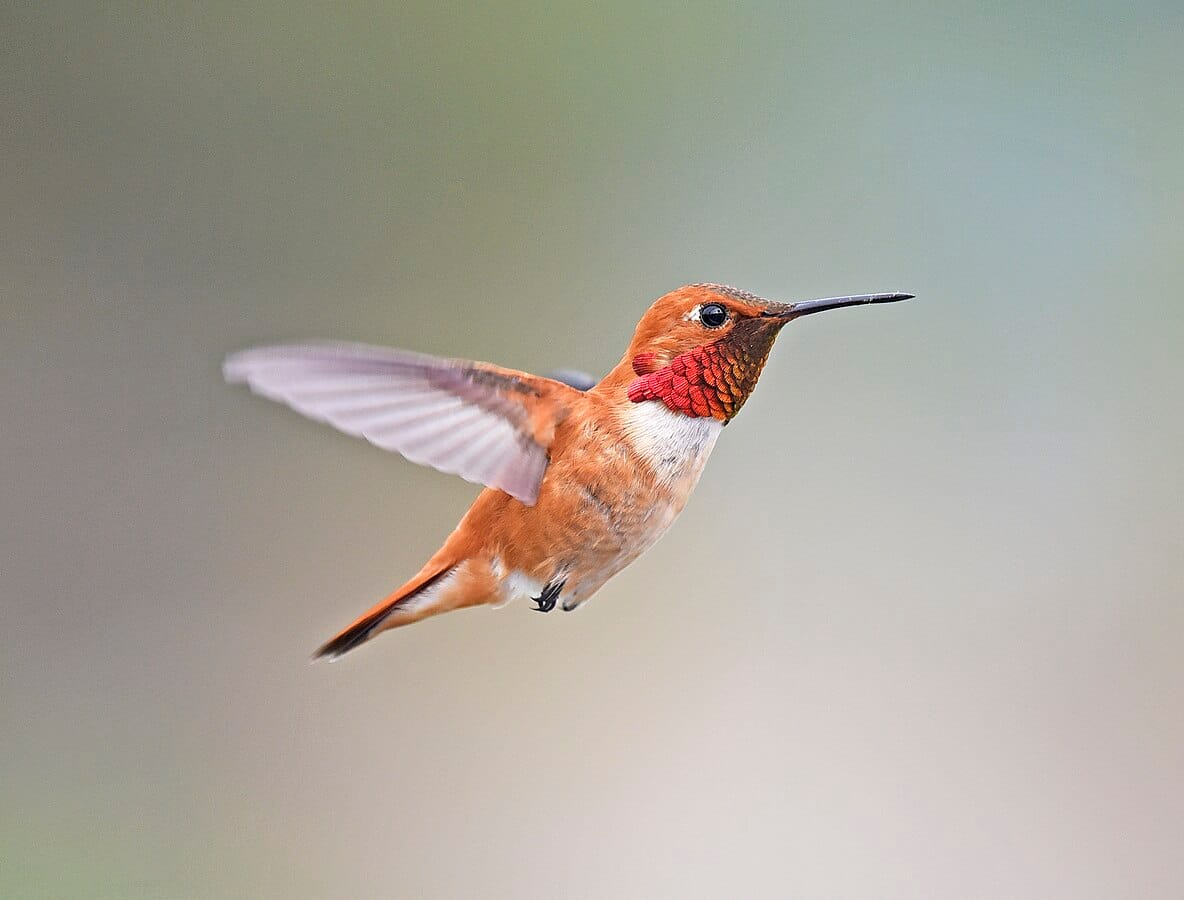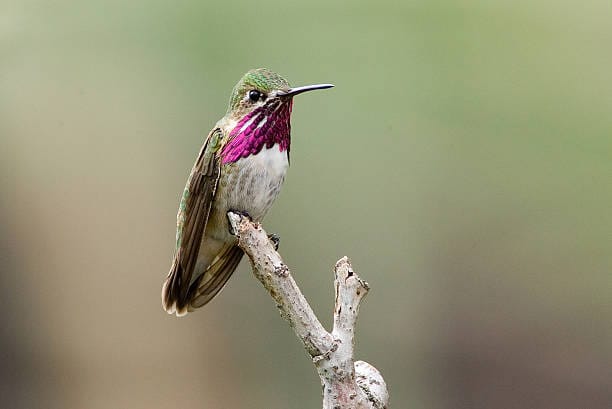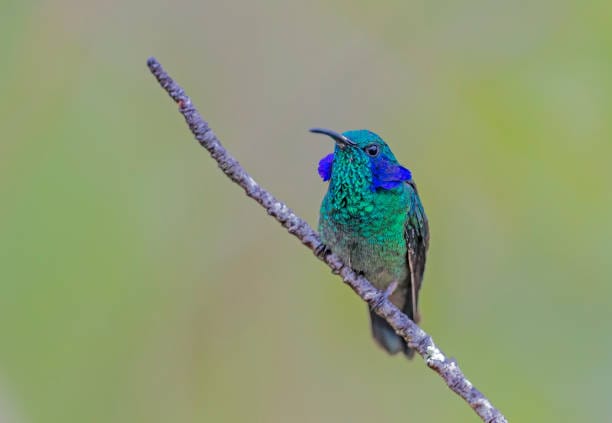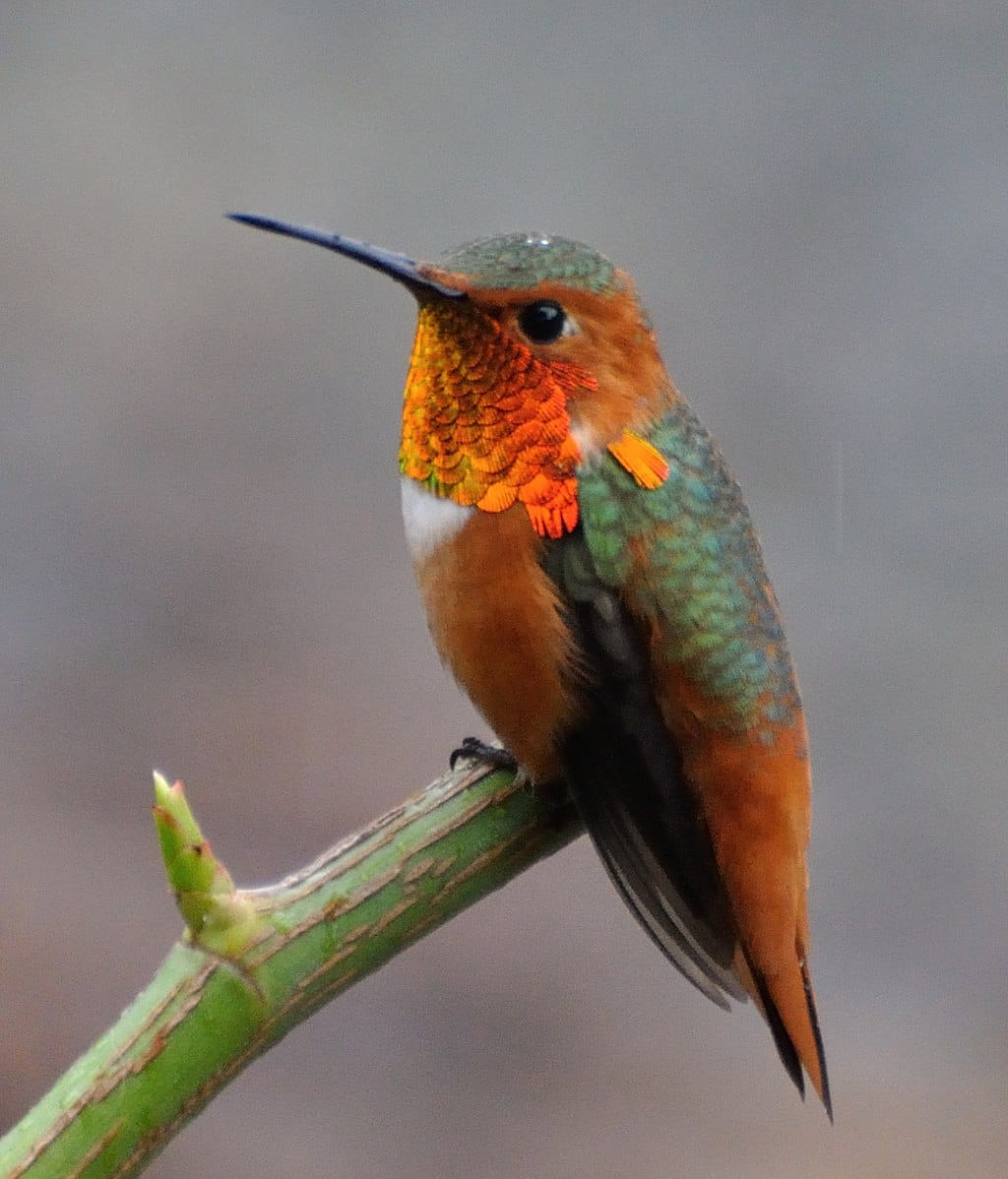Maine, known for its lush forests and picturesque coastline, is home to a small but fascinating selection of hummingbirds. While not as diverse as southern states, Maine hosts a handful of species that migrate through or breed here during the warmer months. Bird enthusiasts can spot these delicate, fast-moving jewels from late spring through early fall. Observing hummingbirds in Maine is both a rewarding and educational experience, offering insight into their extraordinary flight, feeding habits, and behaviors. This guide introduces five types of hummingbirds in Maine, providing identification tips, behavioral insights, and practical advice for enjoying these captivating birds in your backyard or local parks.
1. Ruby-throated Hummingbird (Archilochus colubris)

Fun fact: Ruby-throated Hummingbirds are the only regular breeding species in Maine, famous for their dazzling red throats and lightning-fast wingbeats.
Physical Characteristics & Identification Tips
Adult males display a vibrant ruby-red throat, metallic green back, and grayish-white underparts. Females lack the red throat but show green upperparts and a slightly forked tail with white tips. Measuring 7–9 cm in length and weighing about 3 grams, these hummingbirds are tiny yet remarkably resilient. Observers often identify them by their rapid hovering near flowers and characteristic darting flight.
Behavior and Nesting Habits
Ruby-throated Hummingbirds are territorial and often defend feeding areas aggressively. Females construct delicate cup-shaped nests on tree branches, frequently using plant down and spider silk to secure the structure. Nesting usually occurs between May and July, and mothers carefully camouflage the nest to protect the eggs.
Habitat and Range
They favor deciduous forests, forest edges, meadows, and gardens with abundant nectar sources. In Maine, they are mostly observed in southern and central regions, although sightings occur statewide during migration.
Diet
Primarily nectarivorous, they feed from tubular flowers, supplemented with small insects and spiders for protein. Sugar-water feeders can attract them to backyards, especially when natural blooms are scarce.
Reproduction and Life Cycle
Females lay 1–3 eggs per clutch, incubating them for approximately 12–14 days. Hatchlings fledge around 18–22 days. Ruby-throated Hummingbirds typically have one brood per season in Maine.
Fun Facts / Traits
These birds can beat their wings 50–80 times per second, allowing hovering and even backward flight. They undertake remarkable solo migrations across the Gulf of Mexico each autumn.
Human Interaction
Backyard feeding is common and encourages repeated visits, offering excellent observation opportunities. Using pesticide-free gardens enhances their insect food supply.
2. Rufous Hummingbird (Selasphorus rufus)

Fun fact: Known for its fiery orange plumage, the Rufous Hummingbird is a rare but exciting visitor to Maine during migration.
Physical Characteristics & Identification Tips
Adult males exhibit bright orange-red backs and rufous underparts, with a conspicuous red throat. Females are paler with green backs and rufous flanks. They are slightly smaller than Ruby-throated Hummingbirds, measuring 7–9 cm in length. Identification relies on their striking coloring and energetic flight pattern.
Behavior and Nesting Habits
These birds are bold and aggressive, often chasing other hummingbirds from feeders. In Maine, they rarely breed, but females outside the state create small cup-shaped nests resembling those of Ruby-throated Hummingbirds.
Habitat and Range
They favor open areas, woodland edges, and gardens with abundant nectar during migration. Sightings in Maine are uncommon but increasingly documented due to changing migratory patterns.
Diet
Rufous Hummingbirds feed on nectar from tubular flowers and supplement with small insects, particularly during energy-intensive migration periods.
Reproduction and Life Cycle
In Maine, reproduction is unlikely; however, in their typical western breeding grounds, females lay 2 eggs per clutch, and fledglings leave the nest after 18–22 days.
Fun Facts / Traits
Despite their small size, Rufous Hummingbirds are renowned for aggressive territorial behavior, even dominating larger species at feeders.
Human Interaction
Birdwatchers prize them for their vibrant color and daring antics at feeders. Providing native flowers and safe spaces increases chances of spotting these rare visitors.
3. Calliope Hummingbird (Selasphorus calliope)

Fun fact: The Calliope Hummingbird, North America’s smallest long-distance migrant, occasionally graces Maine with its presence during fall migration.
Physical Characteristics & Identification Tips
Adult males feature a striking magenta throat with streaked white underparts, while females are more muted with green backs and pale throats. They measure 7–8 cm, weighing just 2–3 grams. Observers identify them by their tiny size and swift, erratic flight.
Behavior and Nesting Habits
In Maine, breeding is not observed, but in western habitats, females build tiny nests on sheltered branches. They are highly territorial during migration stops, defending feeding areas vigorously.
Habitat and Range
Calliope Hummingbirds prefer gardens, shrubby areas, and woodland edges during migration. Sightings in Maine are rare and often attract attention from birding enthusiasts.
Diet
These tiny birds feed on nectar and insects, requiring frequent feeding due to high metabolism and rapid wingbeats.
Reproduction and Life Cycle
In Maine, reproduction is unlikely, but in native western ranges, females lay 2 eggs per clutch, with chicks fledging around three weeks later.
Fun Facts / Traits
Despite their small size, they undertake long migrations from western breeding grounds to Mexico, covering thousands of miles individually.
Human Interaction
They are rare highlights for Maine birdwatchers, and backyard nectar stations can occasionally attract these unexpected visitors.
4. Mexican Violetear (Colibri thalassinus)

Fun fact: The Mexican Violetear is an exotic and very rare vagrant in Maine, with only a handful of documented sightings.
Physical Characteristics & Identification Tips
Adults are large for hummingbirds, 11–12 cm long, with bright green plumage and violet ear patches. Their size and coloration make them relatively easy to distinguish from more common visitors.
Behavior and Nesting Habits
Behavior in Maine is largely undocumented due to scarcity, but in native ranges, they are territorial and feed aggressively from nectar-rich flowers.
Habitat and Range
They inhabit tropical forests in their native range but are extremely rare in Maine, appearing mostly during accidental migration events.
Diet
Feeds primarily on nectar and small insects, supporting their high-energy lifestyle.
Reproduction and Life Cycle
Breeding does not occur in Maine; elsewhere, they lay 2 eggs per clutch with young fledging in about three weeks.
Fun Facts / Traits
Their vivid violet ear patches are a key identifying feature and contribute to their dramatic appearance.
Human Interaction
Birders are thrilled by rare sightings, often documenting them for local records.
5. Allen’s Hummingbird (Selasphorus sasin)

Fun fact: Allen’s Hummingbird is a hypothetical or accidental vagrant in Maine, making it a rare gem for enthusiastic birdwatchers.
Physical Characteristics & Identification Tips
Adult males have bright orange-red backs and throats with white underparts, while females are less vivid with green backs. Tiny size and fast flight make identification challenging during rare appearances.
Behavior and Nesting Habits
Behavior in Maine is largely speculative; in western ranges, females build small nests using plant fibers and spider silk, camouflaged among branches.
Habitat and Range
Native to western U.S., in Maine, Allen’s Hummingbirds are observed only during vagrant migration events, often near nectar sources in gardens or parks.
Diet
Feeds on nectar and insects; high metabolism necessitates frequent feeding.
Reproduction and Life Cycle
Breeding does not occur in Maine; elsewhere, they lay 2–3 eggs, and chicks fledge in roughly three weeks.
Fun Facts / Traits
Known for aggressive feeding behavior and long migration distances, these birds demonstrate remarkable endurance despite their small size.
Human Interaction
Backyard observers treasure even a brief glimpse of Allen’s Hummingbird, often documenting sightings for ornithological records.
Comparison Table of 5 Hummingbirds in Maine
| Species | Size (cm) | Male Coloration | Female Coloration | Breeding in Maine | Rarity | Feeding Habits |
|---|---|---|---|---|---|---|
| Ruby-throated Hummingbird | 7–9 | Ruby-red throat, metallic green back | Green upperparts, grayish-white underparts | Yes | Common | Nectar & insects |
| Rufous Hummingbird | 7–9 | Bright orange-red back & rufous underparts, red throat | Paler with green back, rufous flanks | No | Rare | Nectar & insects |
| Calliope Hummingbird | 7–8 | Magenta throat, streaked white underparts | Green back, pale throat | No | Very rare | Nectar & insects |
| Mexican Violetear | 11–12 | Bright green plumage, violet ear patches | Similar to male but less vivid | No | Extremely rare | Nectar & insects |
| Allen’s Hummingbird | 7–8 | Bright orange-red back & throat, white underparts | Green back, less vivid underparts | No | Accidental vagrant | Nectar & insects |
Conclusion
Maine’s hummingbird population may be small compared to southern states, but the species present offer a fascinating glimpse into the lives of these extraordinary birds. From the regular Ruby-throated Hummingbird to rare vagrants like the Mexican Violetear and Allen’s Hummingbird, enthusiasts can enjoy observing remarkable behaviors, migration patterns, and feeding habits. By planting native flowers, maintaining safe nectar feeders, and practicing responsible wildlife observation, birdwatchers in Maine can support these delicate creatures and enhance their experience of hummingbirds in the state.
Frequently Asked Questions About Hummingbirds in Maine
1. How many types of hummingbirds are found in Maine?
Maine hosts around five species of hummingbirds, including the Ruby-throated, Rufous, Calliope, Mexican Violetear, and Allen’s Hummingbird as rare visitors.
2. When is the best time to see hummingbirds in Maine?
The peak season is late spring through early fall, coinciding with migration and breeding for the Ruby-throated Hummingbird.
3. Are Ruby-throated Hummingbirds the most common in Maine?
Yes, Ruby-throated Hummingbirds are the only regular breeders and are most frequently spotted throughout Maine.
4. Can I attract hummingbirds to my Maine backyard?
Yes, planting native flowers and using red sugar-water feeders will draw hummingbirds in Maine to your garden.
5. What flowers attract hummingbirds in Maine?
Trumpet vine, bee balm, columbine, cardinal flower, and honeysuckle are excellent choices for hummingbirds in Maine.
6. Do Rufous Hummingbirds visit Maine often?
Rufous Hummingbirds are rare visitors during migration and are occasionally seen in Maine’s southern regions.
7. Are Calliope Hummingbirds found in Maine?
Yes, they appear rarely during fall migration, often exciting birdwatchers with their tiny size and vibrant magenta throats.
8. What habitats do hummingbirds prefer in Maine?
They favor deciduous forests, meadows, forest edges, and gardens with abundant nectar sources throughout Maine.
9. Do Mexican Violetears breed in Maine?
No, they are vagrants in Maine and do not breed in the state.
10. How long do hummingbirds stay in Maine during migration?
Migrating hummingbirds may stay a few days to a few weeks depending on food availability and weather in Maine.
11. Can Allen’s Hummingbirds be seen in Maine?
Yes, but sightings are extremely rare and usually occur during accidental migration events.
12. How do I identify a Ruby-throated Hummingbird in Maine?
Look for a red throat, metallic green back, grayish-white underparts, and rapid hovering near flowers throughout Maine.
13. Do hummingbirds defend feeding areas in Maine?
Yes, males are territorial and may chase away other hummingbirds from flowers or feeders in Maine.
14. What do hummingbirds eat in Maine?
They primarily consume nectar from flowers, supplemented with small insects and spiders for protein.
15. Can hummingbirds use feeders during Maine winters?
No, most hummingbirds migrate south before winter, and feeders are generally unused during Maine’s cold months.
16. How many eggs do Ruby-throated Hummingbirds lay in Maine?
Females typically lay 1–3 eggs per clutch in Maine.
17. How long does it take for hummingbird chicks to fledge in Maine?
Approximately 18–22 days after hatching, Ruby-throated chicks fledge in Maine.
18. Do hummingbirds in Maine eat insects?
Yes, insects and spiders supplement their diet, providing essential protein for energy.
19. What is the average size of hummingbirds in Maine?
Most species, like the Ruby-throated, measure 7–9 cm in length and weigh about 3 grams in Maine.
20. Can I photograph hummingbirds in Maine?
Absolutely! Use a fast shutter speed to capture their rapid wingbeats, especially during visits to feeders or flowering plants in Maine.
21. Do hummingbirds migrate through Maine?
Yes, Maine is part of the migratory route for several species traveling to and from breeding or wintering grounds.
22. What is the rarest hummingbird sighted in Maine?
The Mexican Violetear and Allen’s Hummingbirds are among the rarest sightings in Maine.
23. How do hummingbirds survive in Maine’s climate?
They migrate south before winter, as Maine’s cold temperatures cannot support them year-round.
24. Can I provide water for hummingbirds in Maine?
Yes, shallow water sources or misters can attract hummingbirds during Maine’s warmer months.
25. Are hummingbirds in Maine protected by law?
Yes, all hummingbirds are protected under the Migratory Bird Treaty Act, including those found in Maine.
26. How fast do hummingbirds flap their wings in Maine?
Ruby-throated Hummingbirds, the most common in Maine, can beat their wings 50–80 times per second.
27. Do hummingbirds in Maine nest in trees or shrubs?
They build delicate cup-shaped nests on tree branches or shrubs, camouflaged with plant material and spider silk.
28. How can I attract more hummingbirds to my Maine garden?
Plant native nectar-rich flowers, use feeders, and avoid pesticides to attract hummingbirds throughout Maine.
29. Are hummingbirds social in Maine?
Generally, hummingbirds are solitary except during migration; they may congregate at abundant food sources in Maine.
30. How long do hummingbirds live in Maine?
Most have short lifespans of 3–5 years, though some Ruby-throated Hummingbirds live longer if they survive migration and predation in Maine.
31. Can hummingbirds recognize humans in Maine?
Yes, hummingbirds may recognize repeated feeders or observers and approach cautiously in Maine.
